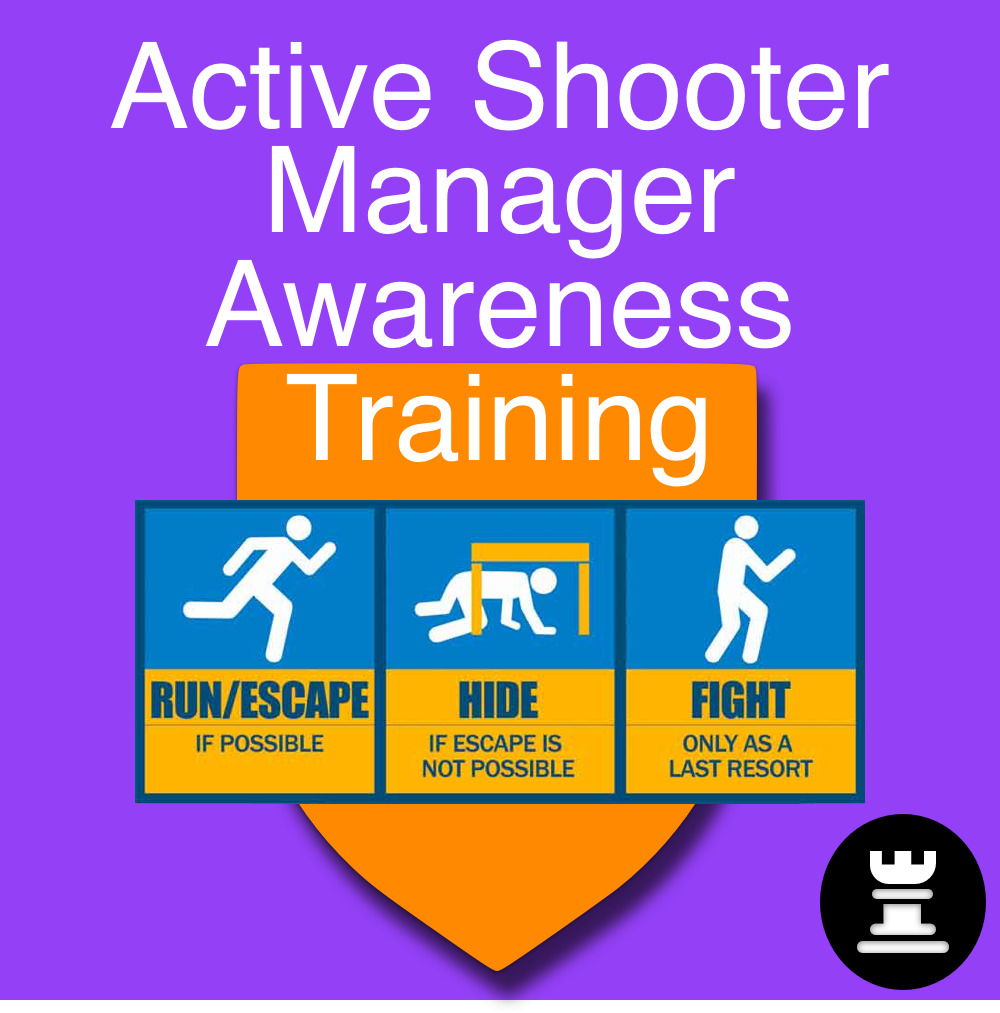The Advantages of Recurring Active Shooter Training for Neighborhood Protection
The Advantages of Recurring Active Shooter Training for Neighborhood Protection
Blog Article
Implementing Active Shooter Training: Ideal Practices for Producing a Safe and Prepared Community Environment
As areas face the distressing reality of active shooter events, the application of comprehensive training programs ends up being critical. A successful method pivots on not only the growth of tailored curricula that address local threats however additionally the participation of varied stakeholders. By using a variety of training methods, communities can make sure that all participants are equipped with necessary skills. Nonetheless, the challenge depends on maintaining a flexible structure that develops with arising risks. What are the vital aspects that can change a common training program into a durable version for area durability?

Recognizing the Need for Educating
In a period noted by boosting incidents of violence in public areas, recognizing the need for active shooter training has actually never been extra crucial. Thorough training campaigns can outfit participants with the understanding and abilities to react decisively.
Training fosters a sense of empowerment and readiness, allowing people to feel even more safe in their environments. The benefits of energetic shooter training extend beyond instant action; they consist of boosting interaction procedures and enhancing overall safety and security steps within organizations.
Trick Parts of Effective Programs
Effective energetic shooter training programs integrate numerous crucial elements that enhance readiness and reaction capacities. Initially, extensive educational program advancement is necessary, guaranteeing that training content matters, evidence-based, and tailored to the certain needs of the company or community. This consists of understanding the dynamics of energetic shooter incidents and the mental impact on individuals entailed.
Second, practical training situations need to be utilized to imitate potential circumstances, allowing participants to exercise decision-making and response methods in a controlled setting. These drills help with muscular tissue memory and build self-confidence among individuals.
Third, a concentrate on communication methods is critical. Establishing clear lines of communication among regulation enforcement, emergency situation responders, and participants makes sure worked with responses during an occurrence. Normal updates and refresher course training courses help keep communication pathways clear and efficient.
4th, recurring assessment and comments systems need to be integrated into the training program - active shooter training. Examining the performance of training through participant responses and efficiency metrics allows for continuous improvement
Finally, fostering a culture of safety and security and preparedness within the community urges watchfulness and aggressive measures, making sure that people are not just experienced yet additionally involved in preserving a safe setting.
Engaging Area Stakeholders

To efficiently involve these stakeholders, it is vital to communicate the goals and benefits of the training. Holding educational sessions can help make clear the training's purpose, address problems, and detail the roles each stakeholder might play. Producing a stakeholder advising board can promote ongoing discussion, allowing for varied viewpoints and understandings to be integrated right into the training program.
Structure relationships with community leaders and companies is also crucial. Their support can improve outreach initiatives, rise participation, and guarantee that training is tailored to the unique demands of the community. Furthermore, stakeholders can help in sharing information and resources, strengthening the message of security and readiness.
Ultimately, engaging community stakeholders not only enhances the training effort yet also cultivates a sense of ownership among locals, causing a more resilient and informed community with the ability of reacting properly to possible risks.
Training Distribution Approaches
Using a range of training delivery techniques is necessary to accommodate the varied knowing styles and requirements of individuals in active shooter training programs (active shooter training). Efficient training can take several kinds, consisting of lectures, hands-on simulations, on-line components, and interactive workshops. Each approach serves an one-of-a-kind purpose and can enhance the general knowing experience

Online modules supply adaptability and ease of find out here now access, allowing participants to find out at their very own speed. These can consist of videos, tests, and conversations to determine understanding. Interactive workshops urge team discussions and problem-solving, advertising team effort and interaction skills.
Incorporating a blended strategy that incorporates these approaches not only enriches the training experience but additionally makes certain that individuals are better prepared to react successfully in the occasion of an energetic shooter situation (active shooter training). By attending to numerous learning choices, companies can develop a more educated and responsive neighborhood
Continuous Analysis and Enhancement
Routine assessment see this website and enhancement of energetic shooter training programs are critical to preserving their importance and efficiency. As dangers develop, so need to the techniques and methods employed in training. Continuous examination makes certain that training material shows the current intelligence on energetic shooter cases, incorporating lessons gained from recent events and readjusting for emerging fads.
To promote this procedure, organizations should develop comments devices that consist of participant examinations, specialist reviews, and incident debriefs. Collecting data on participant efficiency throughout drills and exercises is important, as it highlights locations requiring enhancement and notifies future training sessions. Additionally, involving with police and emergency -responders can provide valuable understandings right into the usefulness and applicability of training methods.
On a regular basis arranged testimonials of training materials and techniques must be mandated, fostering an atmosphere of advancement and adaptability. Organizations needs to also urge a culture of continuous knowing, where personnel feel equipped to recommend modifications websites based upon their experiences. By dedicating to continual assessment and renovation, organizations not just boost the efficiency of their active shooter training programs yet also strengthen their total commitment to security and preparedness within the neighborhood.
Final Thought
In conclusion, efficient application of active shooter training requires a detailed technique that prioritizes area involvement and realistic simulations. Eventually, a dedication to continuous training and enhancement cultivates a culture of vigilance and preparedness, making certain a more secure atmosphere for all neighborhood participants.
Report this page